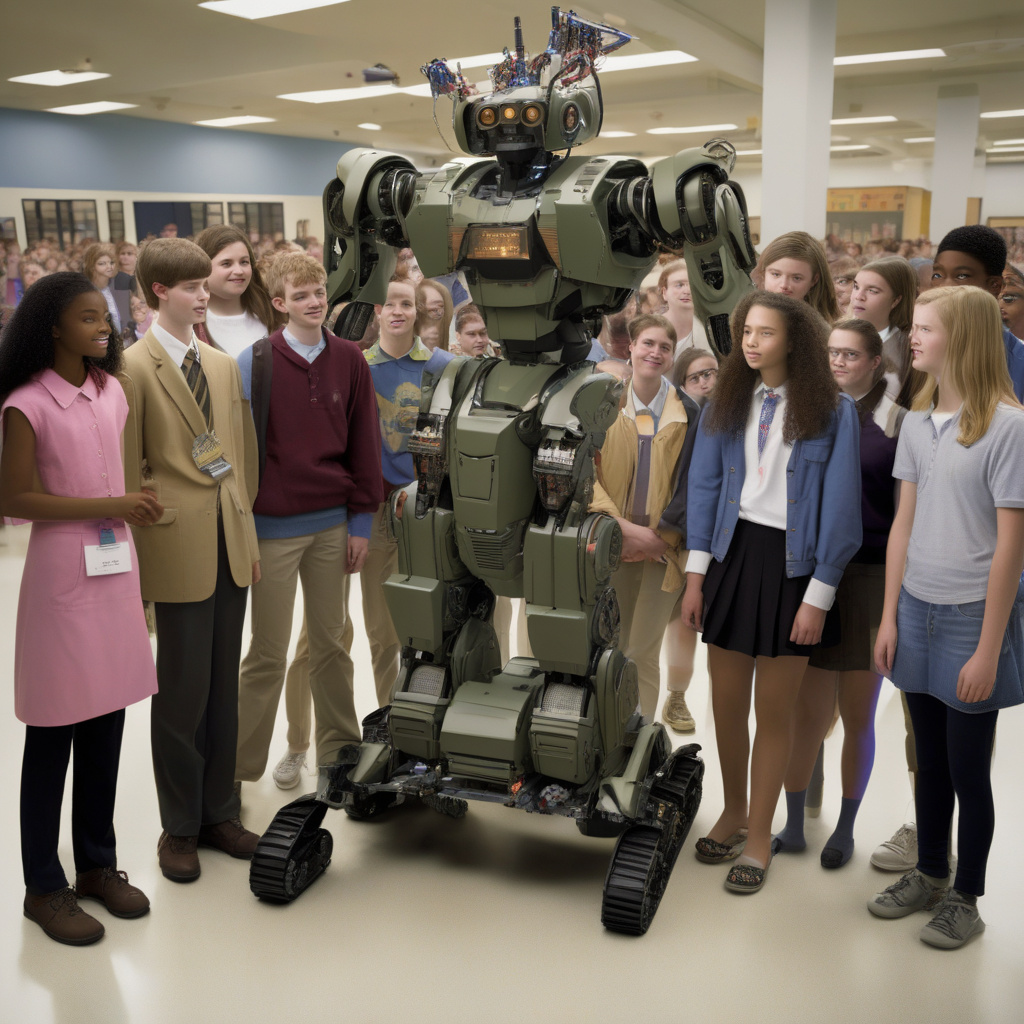School Project Turns into US Military Robot to Defuse World’s Toughest Bombs
What began as a school assignment has evolved into a potential life-saving tool for explosive ordnance disposal (EOD) technicians in the US military. A group of students at the University of Pennsylvania participated in a project to design a robot capable of navigating treacherous terrains and disarming bombs. Little did they know that their innovative creation would catch the eye of military officials and undergo a remarkable transformation into a crucial asset in the fight against terrorism.
The robot, originally built for a robotics competition, demonstrated such impressive capabilities that it garnered attention beyond the academic realm. Its advanced sensors, sophisticated AI algorithms, and durable design made it an ideal candidate for assisting bomb disposal units in handling highly dangerous explosive devices. The transition from a classroom prototype to a military-grade tool was a testament to the power of innovation and collaboration between different sectors.
One of the key features that set this robot apart is its ability to detect and assess various types of explosives with precision and speed. Equipped with state-of-the-art technology, including cameras, chemical sensors, and manipulator arms, it can safely approach suspicious objects, gather data, and perform delicate procedures to neutralize potential threats. This level of sophistication not only enhances the safety of EOD personnel but also enables them to deal with complex situations more effectively.
Moreover, the robot’s remote operation capabilities allow technicians to control it from a safe distance, minimizing the risk of injury or casualties in the event of an explosion. Real-time feedback and communication systems ensure seamless coordination between the machine and its human operators, enabling swift decision-making and response to evolving circumstances. In high-pressure scenarios where every second counts, having such a reliable and versatile tool can make a significant difference in saving lives.
The successful integration of this robot into the military’s arsenal highlights the importance of leveraging technological advancements for national security purposes. By harnessing the ingenuity of young minds and fostering a culture of innovation, groundbreaking solutions like this one can emerge to address critical challenges faced by defense forces worldwide. It serves as a compelling example of how unconventional ideas born in academic settings can have real-world applications with far-reaching impact.
As the threat of improvised explosive devices (IEDs) continues to pose a serious risk in conflict zones and urban areas, the role of robotics in EOD operations is becoming increasingly vital. Machines like the one developed from a simple school project have the potential to revolutionize the way bomb disposal missions are conducted, offering enhanced capabilities, efficiency, and safety measures. With ongoing advancements in technology and ongoing collaboration between educational institutions, industries, and government agencies, the future looks promising for creating more innovative solutions to safeguard communities and combat threats effectively.
In conclusion, the transformation of a school project into a sophisticated military robot for defusing the world’s toughest bombs exemplifies the power of innovation, cooperation, and adaptability in addressing security challenges. By recognizing and nurturing talent at the grassroots level, we can unlock groundbreaking ideas that have the capacity to reshape defense strategies and protect lives on a global scale.
robotics, military technology, innovation, bomb disposal, national security.











